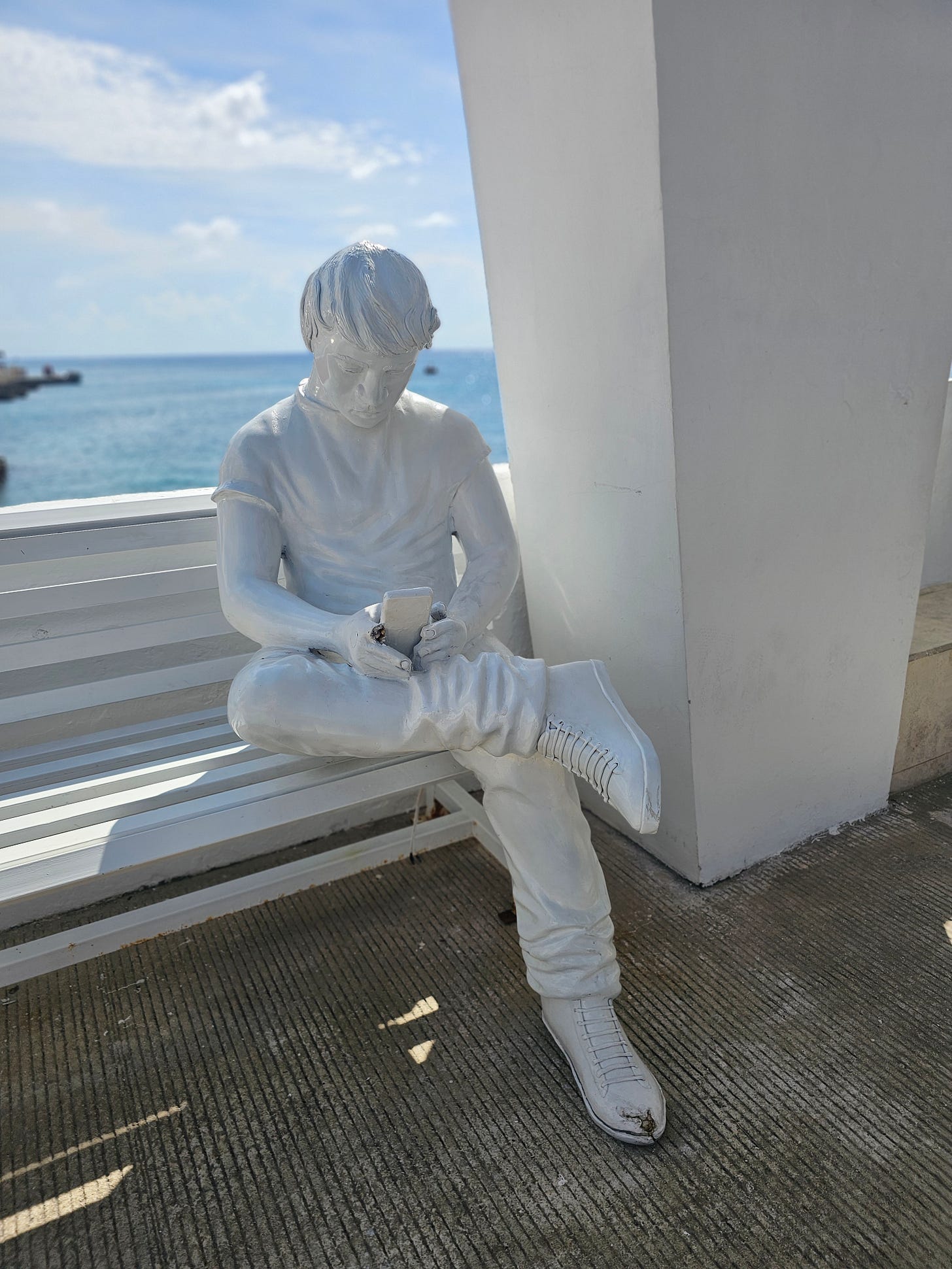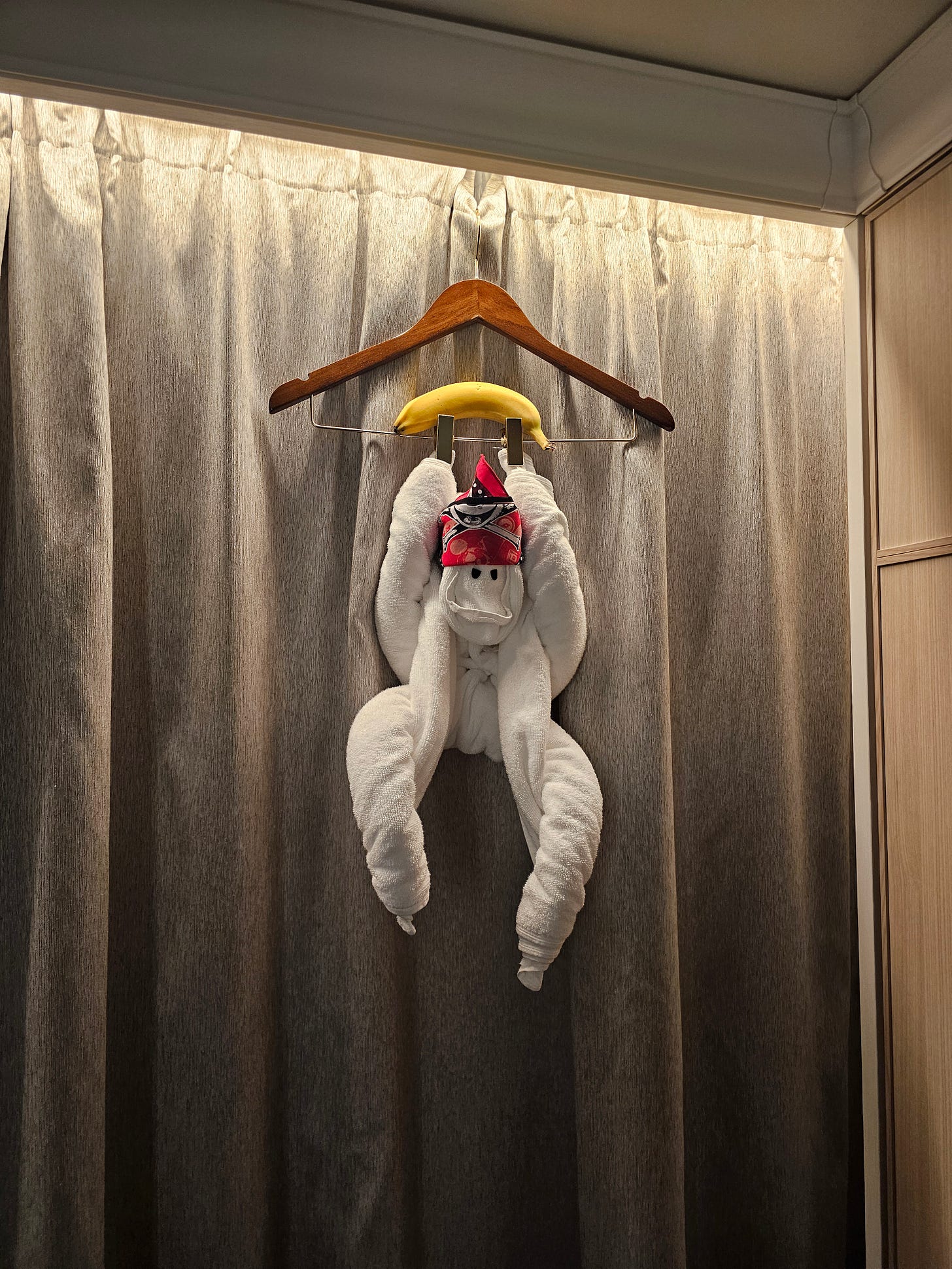What a Disney Cruise Taught Me About Product Management
Lessons in building better products from unexpected places.
I recently took a family trip on a Disney cruise (our first cruise ever!). On the surface, it was a vacation, a chance to unwind, spend time together, and see the world from the deck of a ship.
But I can’t seem to turn off the product lens. Everywhere I looked, I noticed thoughtful design decisions, empowered teams, and small moments of delight that let guests shape their own adventure.
The Walt Disney Company is a masterclass in experience design, where Imagineers obsess over every touchpoint to make the magic feel effortless. Disney shows us that unforgettable experiences don’t happen by chance; they’re the result of disciplined creativity and meticulous attention to detail.
This wasn’t just about hospitality. It was a masterclass in user experience — the kind of principles every product leader should pay attention to, whether building a digital platform or designing a physical environment.
Intentional Disconnection
One of the best parts of the cruise was putting our phones away. We made a deliberate choice: no internet plan, no notifications, no distractions. We downloaded music and podcasts for quiet moments, but otherwise disconnected completely. At first, it felt strange. The kids reached for their tablets on the first excursion bus ride, only to realize they didn’t have them. Then something unexpected happened: they started making up games, laughing, and playing together without screens. We were more present for both the fun and the frustrating moments, fully in it as a family. It sparked creativity, long conversations, and a kind of calm we rarely get at home.
That experience made me think of Duolingo. My streak broke because of the cruise, and it’s been surprisingly hard to go back. The pause wasn’t intentional from Duolingo’s side, but it was for me. I paused to be present with my family, but when I returned, the habit was gone. Duolingo sent friendly nudges, but my motivation didn’t come back. The cruise pause felt positive and shared. The Duolingo pause felt like a loss. One left me connected; the other left me disengaged.
Product Insights:
Not all pauses are equal. Some create joy and deepen loyalty; others unintentionally break habits and risk churn. As product managers, we should design not only for continuous engagement but also for graceful re-engagement — helping users return with ease, context, and motivation after any break, intentional or not. Features like streak freezes, offline modes, or gentle nudges can balance engagement with presence.
Watching my kids invent games without screens reminded me that the best features are invisible; they provide space and structure but let the user create the story.
Thoughtful Stateroom Design
Once we were unplugged, I noticed how even the physical space had been crafted to support presence and flexibility. The stateroom was designed with a family of four in mind. The bunk beds folded up during the day, freeing floor space. There was a king bed for the adults, hooks and shelves for hats, bags, and clothing, and plenty of closet space with hangers for everyone. The mini fridge and additional storage made organizing easy.
The bathroom setup was brilliant. Two separate sinks and a split bathroom allowed multiple people to get ready simultaneously. My kids’ routines weren’t disrupted, and we could all move around efficiently. A curtain separated the bunk area from the main bed space, giving a sense of privacy without isolating anyone.
Small touches added delight: towel animals, light dimmers, chocolates during turn-down service, and TVs displaying reminders for the next day’s activities. The room was cleaned multiple times a day, keeping everything feeling fresh.
Product Insight:
Design for both function and delight. Anticipate multi-user needs, enable parallel use, and layer small, thoughtful touches that elevate the experience.
Post-COVID Health Considerations
The ship had clear health-conscious design choices. Kid-height automatic sinks and handwashing stations made hygiene easy. Wipes were available at every restaurant entrance, and sinks were strategically placed before the buffet service. These measures reduced anxiety and made it easier for families to enjoy their time without worry.
Product Insight:
Anticipate situational user needs. Safety, hygiene, and convenience reduce friction, build trust, and improve overall experience.
Service and Staff Personalization
Dinner service was a lesson in empowerment and personalization. The same hosts and servers greeted us every night, remembering our kids’ preferences and adjusting seating arrangements to match moods. They accommodated off-menu requests, anticipated drink orders, and even created playful moments with magic tricks and napkin animals.
Kids learned that their preferences mattered, and we as adults appreciated the consistency and attention to detail. It made tipping easy, built rapport, and created trust.
Product Insight:
Empowered teams that can make real-time decisions based on consistent user-focused principles create stronger loyalty and engagement: personalization and consistency matter.
MagicBand+: Seamless Technology
The MagicBand+ replaced room keys, handled charges, and even tracked kids in the kids' club. Adults used it for ID and payments, while kids used it mainly for identification. Even when not charged, critical functions continued to work. The band lit up during shows, which delighted the kids, but the only minor friction was worrying about losing it, since it didn’t have a clasp.
Product Insight:
Simplify user routines. Integrate multiple functions into one tool, anticipate different user segments, and include fallback mechanisms for critical operations.
Last-Day Experience: Peak-End Matters
Technology reduced friction throughout the cruise, making the final day (usually a stressful one) almost effortless. Disney-character luggage tags helped locate bags quickly. Door stoppers outside rooms made it easy to leave luggage for pickup. Laundry services were available, and the entire process reduced stress at the most critical moment.
Even small delays were handled well, showing that attention to detail and clear communication matter. The cruise ended on a high note, reinforcing the “peak-end” rule - people remember the peak and the finish.
Product Insight:
Design the conclusion deliberately. Reduce friction at critical exit points and provide clear cues to leave users with a positive final impression.
Key Product Lessons
Design experiences, not just features: Products are more than a collection of features; they are journeys that users live through. Focusing on the holistic experience: how features interact, how users feel, and the flow between touchpoints, creates lasting value and emotional connection. This mindset ensures that every decision contributes to a cohesive, meaningful experience.
Anticipate both functional and emotional user needs: Great products address not only what users need to accomplish but also how they feel while doing it. Anticipating pain points, points of friction, and emotional triggers allows teams to design experiences that feel effortless and supportive. This mindset ensures that solutions are both usable and meaningful.
Empower users to choose their own adventure: Great experiences give users the freedom to chart their own path. Instead of forcing a single workflow, design systems that allow users to explore, make decisions, and move at their own pace. When users can act independently while still being supported, they feel in control, confident, and engaged. This principle encourages flexibility, creativity, and ownership in how users interact with your product.
Layer delight into everyday interactions: Small, thoughtful touches create emotional resonance and deepen loyalty. Delight doesn’t have to be costly or complex. It’s about anticipating moments where a little care or creativity enhances the experience. This principle encourages product teams to think beyond functional requirements and consider how to make interactions memorable.
Proactively reduce friction: Friction slows users down, increases error rates, and decreases satisfaction. Identifying points of friction before they impact the experience and designing solutions that remove barriers builds trust and creates a seamless journey. This principle is critical for both digital and physical products.
Empower teams to make real-time decisions: Processes and approvals can slow down responses to user needs. Empowered teams guided by clear principles can act in the moment, delivering personalized, high-quality experiences. Leadership should focus on creating guardrails and ethos, not micromanaging every decision.
Support intentional pauses without breaking core functionality: Users benefit from opportunities to step away intentionally, whether to focus, rest, or reset. Products should support these pauses without causing loss, frustration, or disengagement, and include mechanisms to encourage smooth re-entry. This helps balance engagement with well-being and long-term retention.
Craft the end experience to leave a lasting impression: The final moments of an experience often shape memory and satisfaction. Deliberate design at exit points, clear communication, and thoughtful closure create lasting positive impressions. Product teams should plan for these moments as carefully as they plan for the main user journey.
Experiencing the cruise through a product lens reminded me that great design is not about adding more features or flashy technology. It is about anticipating needs, reducing friction, and giving users the freedom to shape their own experience. Every detail, from the way the stateroom was arranged to the thoughtful touches in service and the seamless MagicBand+ technology, worked together to create an environment where choice, delight, and presence were possible.
For product teams, the lesson is simple: build experiences, not just features. Watch your users closely, understand how they move through your product, and look for moments where small, intentional design choices can create joy, confidence, and trust. Some of the best insights come when you step back, disconnect, and experience your product or the world as your users do. Doing this helps you create journeys that are not just functional, but memorable, empowering, and in a small way, magical.



